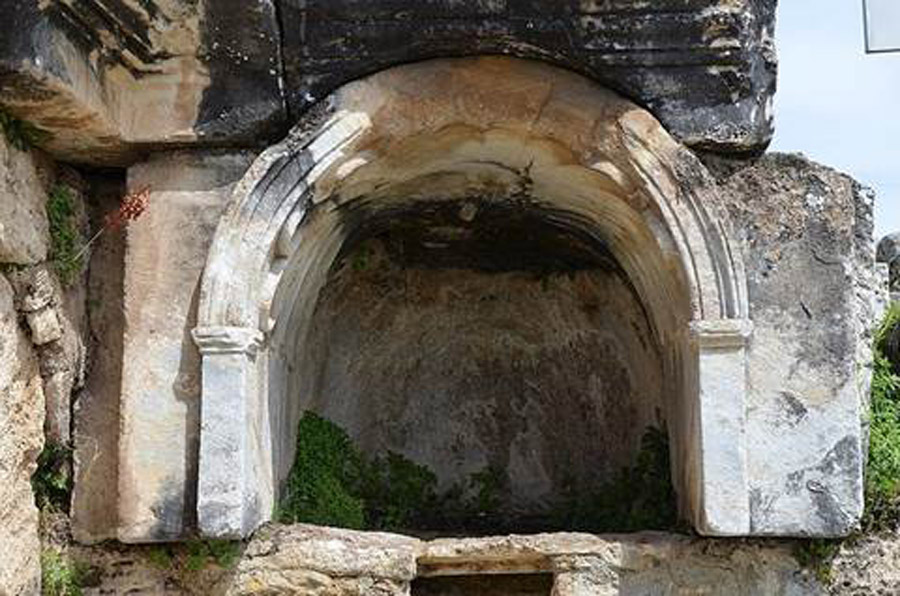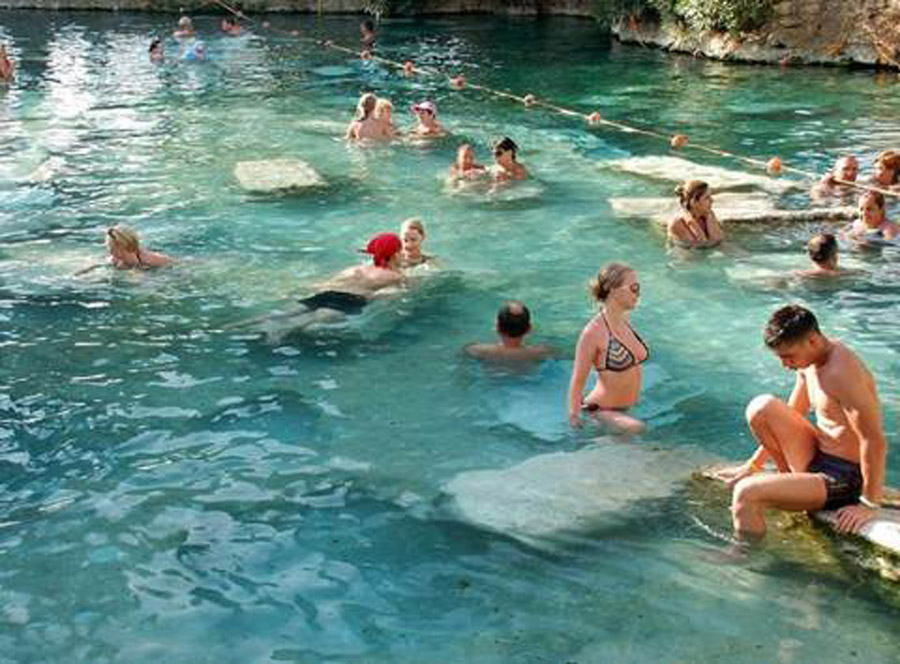In the Denizli province of Turkey, near the city of Pamukkale, lie the ruins of the Ancient Greek city of Hierapolis. While many tourists visit for the natural hot springs and picturesque ruins, the ancient city hides a far more sinister secret: The Ploutonion.
This is a religious site hidden at Hierapolis, specifically dedicated to Pluto, god of the underworld. More than this, the Greeks and later the Romans considered this place the entrance to the realm of Pluto. People used to visit the place to worship Pluto, referring to it as the gateway to the underworld.
But this was not some simple temple complex. The Ploutonion itself was a small cave, with a flight of steps leading downwards deep underground, a pathway to hell. Anyone foolish enough to descend those steps would be in considerable danger, even today.
Pluto’s Gate
The foundations of Hierapolis were laid in the Phrygian era, which reached its zenith in the 8th century BC. The Phrygians considered the site sacred to the Anatolian mother goddess Cybele and a temple to Apollo was built over the cave.
But much of what survives of Hierapolis was established by the King of Pergamum Eumenes II during the 2nd century BC. The name Hierapolis was derived from Hiera, who was the wife of the Pergamum founder Telephus.

In the 3rd century BC, the city was classified by the Romans as part of the region Pisidia Pacatiana. Finally in 129 BC the city was annexed into the Asian province of the Roman Empire, and fell under the administration of the governors of ancient Rome.
- Lake Avernus Mythology, Oracles, and the Underworld
- Mysteries of Surt’s Cave: Bandits, Mutilations, and the Fire Giant
Between 100 BC and 100 AD, during the beginning of the Roman Imperial period, the Ploutonion, or “Pluto’s Gate” at Hierapolis was created in honor of Pluto-Hades and his wife Kore-Persephone. At this time, it was known as the “Guide of the East” and the Ploutonion continued as an important Anatolian religious site, reaching its peak from 96 AD to 162 AD.
Hierapolis later played a crucial role in Christianity spreading in Asia Minor, once again becoming a religious center in the 4th century AD. The Christians were well aware of the dangers of the Ploutonion and apparently filled the cave entrance with rocks.
The Cave Of Death
The Ploutonion, or “Pluto’s Gate,” was rediscovered by Italian archaeologists in 1965. They uncovered two statues of Cerberus (the three-headed dog that guards the underworld) and Hades, and these were placed on the original sites. The age of the statues could not be determined.
The statues themselves were mounted near the “Theatron,” raised terraces overlooking a large sunken arena, at the center of which was the entrance to the cave. Ancient testimony from Greek and Roman observers, including Pliny the Elder, Strabo, Damascius, and Cassius Dio, tells us of the ceremonies at the site.
Sacrificial animals, usually bulls, were offered to Pluto by being sent alive into the cave, probably at dawn. Ropes were tied to the animals, and when they were hauled back out of the cave Pluto had taken them. Without exception the sacrificial animals were dead.

The older Phrygian ceremonies were even bolder. Eunuch priests of the goddess Cybele (called Galli by the Romans) would themselves descend into the cave and allegedly emerge alive, showing that they were protected from its dangers. It was strictly forbidden for the uninitiated to enter the cave, for they would also surely die.
The Secret Of The Cave
So, did Pluto himself rise to take his offerings? Sadly, the truth is more prosaic. The caves under the Ploutonion are geothermically active, emitting carbon dioxide as well as other toxic fumes and gases. Any living creature that entered the cave would be quickly suffocated by the lack of oxygen.
- Strange and Dangerous: What Lies at the Heart of Davelis Cave?
- Cheated in Business or Unlucky in Love? Get Yourself a Curse Tablet!
The risk was particularly acute at this site because of the presence of running water, which flows through a deep cleft in the rock behind a small 32 square feet (3 square meter) chamber in the cave, big enough for only a single person. The water draws the gas into the chamber, allowing for high levels of carbon dioxide to build up there.
The air rising from the cave was warm, and during the night would build up in concentration, filling the sunken arena surrounding the cave with an invisible lake of carbon dioxide. However, carbon dioxide is heavier than air, which meant the spectators on the raised Theatron would be safe.
At dawn the concentration would be at its peak and the animals sent into the cave would be certain to die. Then, as the heat of the day burned off the dangerous gases, the sunken arena would once again become safe to enter.
The priests of Cybele were well aware of the dangers of the cave. There are pockets of oxygen within the cave system and they most likely survived by crawling into one of these safe spots, emerging unharmed later to demonstrate their protection.
Still Dangerous
The temple and much of the city was destroyed in the 6th century AD by an earthquake, but the site had been closed off by Christians for some time at that point. Today the site, along with the nearby hot springs and bathing pools, is a popular tourist destination.

But the Ploutonion continues to release its dangerous gases into the air, making entrance to the cave hazardous and restricted. If an unwary tourist enters the cave, even today Pluto will still rise from the underworld to take them.
Top Image: The gateway to the underworld was a dangerous place. Source: andreiuc88 / Adobe Stock.
By Bipin Dimri